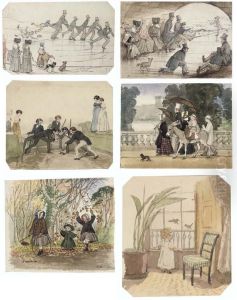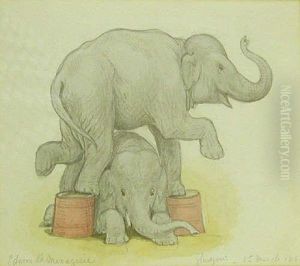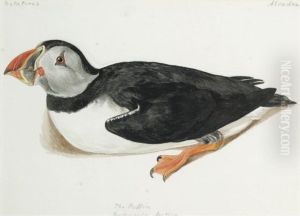Jemina Blackburn Paintings
Jemina Blackburn, born in 1823, was a notable Scottish artist and diarist, whose work provides a rich insight into the 19th century life in Scotland. Born Jemina Wedderburn in Edinburgh to a family deeply interconnected with the Scottish Enlightenment, she had the privilege of growing up in an intellectually stimulating environment. This early exposure to the arts and sciences profoundly influenced her later work, which is characterized by its detailed observation of daily life and nature. Jemina was not only a talented artist but also a keen observer of the social and natural world, which she depicted with both affection and a critical eye.
In 1849, Jemina married Hugh Blackburn, a professor of mathematics at the University of Glasgow, which further enriched her intellectual and artistic environment. The couple shared a deep interest in the natural sciences, and Jemina's work often includes illustrations of birds and other wildlife, showcasing her meticulous attention to detail and her deep appreciation for the natural world. Her illustrations were not only artistically acclaimed but also valued for their scientific accuracy, contributing to the field of ornithology.
Throughout her life, Jemina Blackburn was an active member of the Scottish art scene. Her watercolors and illustrations were exhibited in various venues, earning her recognition among her contemporaries. However, it is her diaries, filled with vivid illustrations and observations of Scottish life, that have cemented her legacy. These diaries offer a window into the daily life, social events, and natural beauty of Scotland in the 19th century, making them invaluable resources for historians and art lovers alike.
Jemina Blackburn passed away in 1909, leaving behind a body of work that continues to be celebrated for its artistic beauty and historical significance. Her contributions to art and science, particularly ornithology, and her detailed records of 19th-century Scottish life, make her an important figure in Scottish history and culture. Her legacy is preserved through her artwork and diaries, which continue to be studied and admired for their insight into Victorian Scotland.


